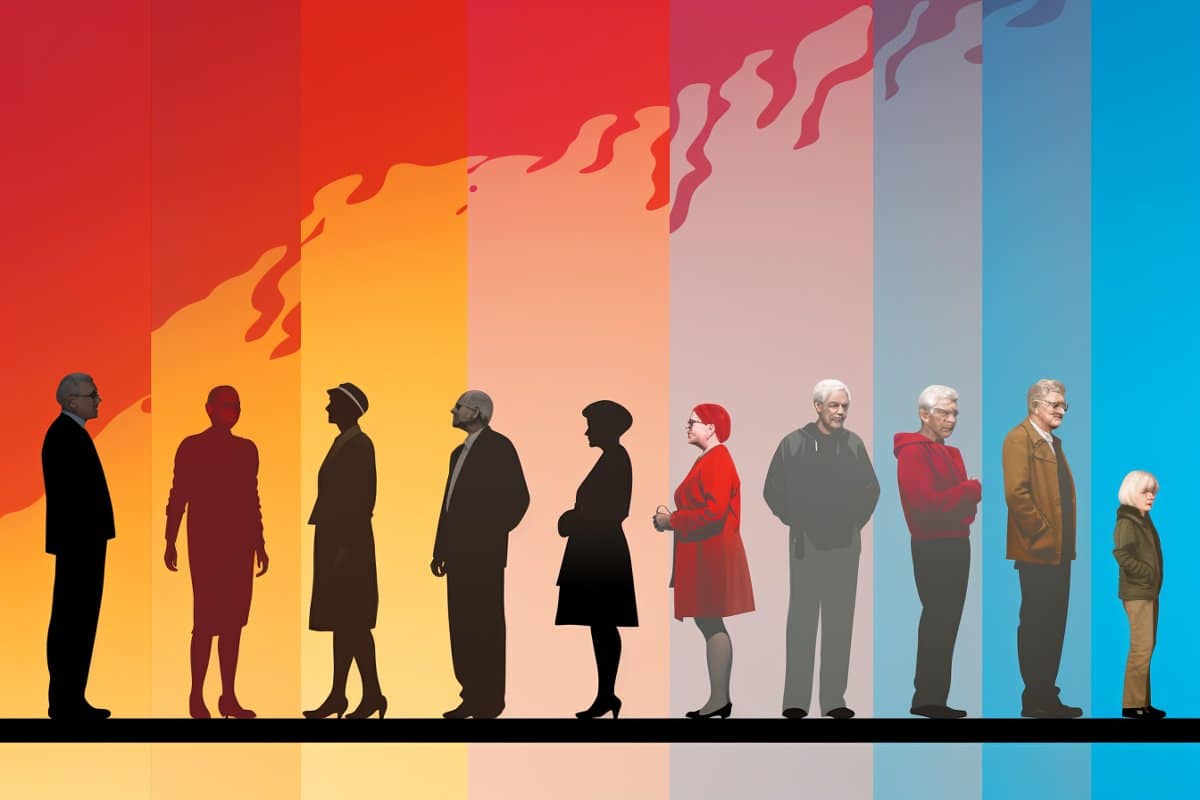
Summary: A new study reveals an increasing life expectancy gap between men and women in the United States, now at its widest since 1996. The study attributes this growing disparity to factors including the COVID-19 pandemic and the opioid overdose epidemic.
The gap, which was at its smallest in 2010, has expanded due to higher male mortality rates from the pandemic, accidental injuries, drug overdoses, and suicides. This trend raises concerns about the need for gender-specific healthcare interventions to address this rising disparity.
Key Facts:
- The life expectancy gap between American men and women widened to 5.8 years in 2021, the largest since 1996.
- The COVID-19 pandemic and increasing deaths from unintentional injuries, mostly drug overdoses, have been significant contributors to this trend.
- Men have experienced higher mortality rates during the pandemic, influenced by factors like health behaviors, social risks, and chronic conditions.
Source: UCSF
We’ve known for more than a century that women outlive men. But new research led by UC San Francisco and Harvard T.H. Chan School of Public Health shows that, at least in the United States, the gap has been widening for more than a decade. The trend is being driven by the COVID-19 pandemic and the opioid overdose epidemic, among other factors.
In a research paper, published Nov. 13, 2023, in JAMA Internal Medicine, the authors found the difference between how long American men and women live increased to 5.8 years in 2021, the largest it’s been since 1996. This is an increase from 4.8 years in 2010, when the gap was at its smallest in recent history.
The pandemic, which took a disproportionate toll on men, was the biggest contributor to the widening gap from 2019-2021, followed by unintentional injuries and poisonings (mostly drug overdoses), accidents and suicide.
“There’s been a lot of research into the decline in life expectancy in recent years, but no one has systematically analyzed why the gap between men and women has been widening since 2010,” said the paper’s first author, Brandon Yan, MD, MPH, a UCSF internal medicine resident physician and research collaborator at Harvard Chan School.
Life expectancy in the U.S. dropped in 2021 to 76.1 years, falling from 78.8 years in 2019 and 77 years in 2020.
The shortening lifespan of Americans has been attributed in part to so-called “deaths of despair.” The term refers to the increase in deaths from such causes as suicide, drug use disorders and alcoholic liver disease, which are often connected with economic hardship, depression and stress.
“While rates of death from drug overdose and homicide have climbed for both men and women, it is clear that men constitute an increasingly disproportionate share of these deaths,” Yan said.
Interventions to reverse a deadly trend
Using data from the National Center for Health Statistics, Yan and fellow researchers from around the country identified the causes of death that were lowering life expectancy the most. Then they estimated the effects on men and women to see how much different causes were contributing to the gap.
Prior to the COVID-19 pandemic, the largest contributors were unintentional injuries, diabetes, suicide, homicide and heart disease.
But during the pandemic, men were more likely to die of the virus. That was likely due to a number of reasons, including differences in health behaviors, as well as social factors, such as the risk of exposure at work, reluctance to seek medical care, incarceration and housing instability. Chronic metabolic disorders, mental illness and gun violence also contributed.
Yan said the results raise questions about whether more specialized care for men, such as in mental health, should be developed to address the growing disparity in life expectancy.
“We have brought insights to a worrisome trend,” Yan said. “Future research ought to help focus public health interventions towards helping reverse this decline in life expectancy.”
Yan and co-authors, including senior author Howard Koh, MD, MPH, professor of the practice of public health leadership at Harvard Chan School, also noted that further analysis is needed to see if these trends change after 2021.
“We need to track these trends closely as the pandemic recedes,” Koh said. “And we must make significant investments in prevention and care to ensure that this widening disparity, among many others, do not become entrenched.”
Authors: Additional authors are affiliated with the National Center for Health Statistics and the Boston University School of Public Health.
Funding: The study received no funding, and the authors have no conflicts of interest.
About this longevity research news
Author: Victoria Colliver
Source: UCSF
Contact: Victoria Colliver – UCSF
Image: The image is credited to Neuroscience News
Original Research: Closed access.
“Widening Gender Gap in Life Expectancy in the US, 2010-2021” by Brandon Yan et al. JAMA Internal Medicine
Abstract
Widening Gender Gap in Life Expectancy in the US, 2010-2021
As life expectancy at birth in the US decreased for the second consecutive year, from 78.8 years (2019) to 77.0 years (2020) and 76.1 years (2021), the gap between women and men widened to 5.8 years, its largest since 1996 and an increase from a low of 4.8 years in 2010.
For more than a century, US women have outlived US men, attributable to lower cardiovascular and lung cancer death rates related largely to differences in smoking behavior.
This study systematically examines the contributions of COVID-19 and other underlying causes of death to the widened gender life expectancy gap from 2010 to 2021.
Women' Life Expectancy Six Years Longer Than Men - Neuroscience News
Read More
Bagikan Berita Ini

















0 Response to "Women' Life Expectancy Six Years Longer Than Men - Neuroscience News"
Post a Comment